Blog Posts Tagged Technical Content
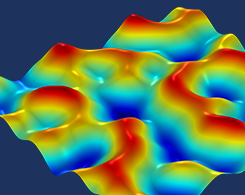
Fractals, Noise, and State Variables
Ever notice how the leaves of a fern seem to show a self-repeating pattern? Fractals are objects that exhibit some form of self-similarity at different scales. Learn how to model them here.
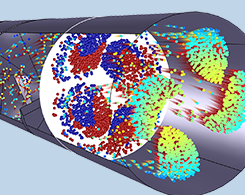
What Formulation Should I Use for Particle Tracing in Fluids?
The COMSOL® software gives you 4 equation formulation options when modeling particle tracing in fluids: Newtonian; Newtonian, first order; Newtonian, ignore inertial terms; and Massless.
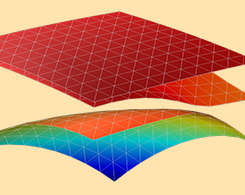
k • p Method for Strained Wurtzite GaN Band Structure
Model a wide range of semiconductor systems, such as particles with spins and strained wurtzite crystals, using multicomponent wave function functionality in the Schrödinger Equation interface.
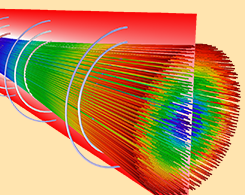
Modeling a Pierce Electron Gun in COMSOL Multiphysics®
Cathode ray tubes, electron microscopes, spectrometers, and particle accelerators: These devices and components commonly use Pierce electron guns.
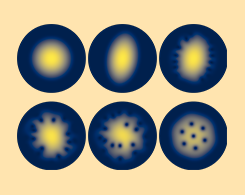
Model Vortex Lattice Formation in a Bose–Einstein Condensate
Bose–Einstein condensation can cause superfluidity, superconductivity, lasers, and trapped dilute cold atoms. When such systems are subjected to rotating perturbation, it forms a vortex lattice.
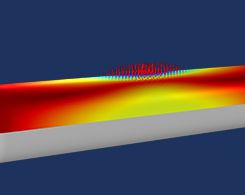
Accelerating Model Convergence with Symbolic Differentiation
Whenever you set up and solve a nonlinear problem in COMSOL Multiphysics, a symbolic differentiation engine is automatically used to ensure high robustness and accelerate model convergence.
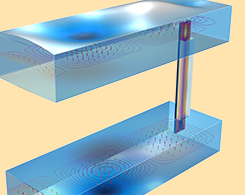
3 Examples of Modeling Transitions for Rectangular Waveguides
Waveguide to planar, coaxial to waveguide, and rectangular to elliptical: These 3 different transitions for rectangular waveguides can be modeled using COMSOL Multiphysics® and the RF Module.
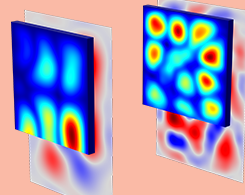
Modeling Sound Transmission Loss Through a Concrete Wall
The sound loss transmission (STL) through a building component is the logarithmic ratio between the total incident power on the structure relative to the total transmitted power.
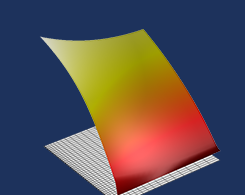
Equation-Based Modeling with a Space-Time Discretization
In COMSOL Multiphysics®, almost any expression in a computational model can be modified. For example, using a space-time discretization can make optimization problems easy and fast to implement.
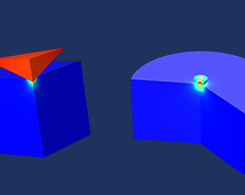
Exploring the Ambiguity of Hardness Numbers with COMSOL®
To help customers easily obtain stress-strain curves from indentation test data, this guest blogger turned to simulation applications and COMSOL Compiler™ — and created a brand new product.
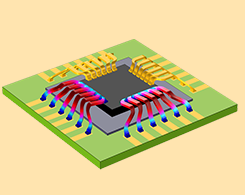
Course: Modeling Joule Heating with Thermal Expansion
Get an overview of the course on Joule heating and thermal expansion. Plus, access supporting material.

Estimating Hyperelastic Material Parameters via a Lap Joint Shear Test
For rubber, polymers, and biological tissue, the relationship between stress and strain is nonlinear, even at small loads. The lap joint shear test can be used to determine material properties.
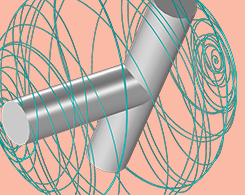
Why Do Tennis Rackets Tumble? The Dzhanibekov Effect Explained…
If you toss a cellphone, tennis racket, wingnut, cereal box, or any object with 3 axes of rotation in the air, it will demonstrate this interesting and unusual effect…

How Do Bicycle Pedals Stay On?
Ever wonder why the left pedal of a bike has left-handed threads and the right pedal has right-handed threads, yet the pedals stay on when riding?
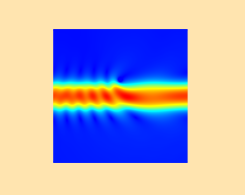
Modeling a Scatterer Near an Optical Waveguide
In the real world, most structures are more complex than a 2D dielectric slab. However, if you’re designing photonic structures, you can learn a lot about wave optics modeling from this example.
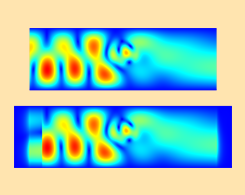
Modeling Waveguides that Support Multiple Modes
2 ways you can model a waveguide that supports multiple modes: add a PML that can be used to absorb any modes, or explicitly add ports for each possible mode.
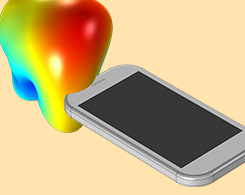
Computational Electromagnetics Modeling: Which Module to Use?
If you work with a particular electromagnetic device or application area, you might be wondering which module in the COMSOL product suite is right for you. Keep reading for a comprehensive intro.
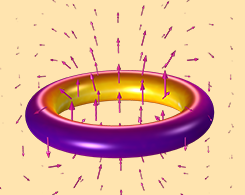
Course: Modeling Electromagnetic Coils in COMSOL®
Get an overview of our Learning Center course on modeling coils using COMSOL Multiphysics and the AC/DC Module, from setting up a coil model to analyzing electromagnetic heating and more.
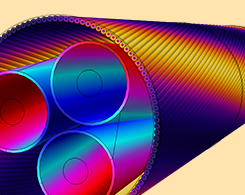
Using 3D Models to Investigate Inductive Effects in a Submarine Cable
It takes a modern desktop computer ~30 minutes to compute a 3D cable model with twisted magnetic armor. Consequently, 3D cable models are replacing empirical models in the power cable industry.
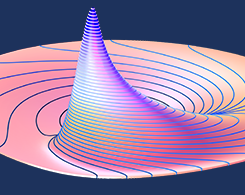
Exploiting Hardware Parallelism with COMSOL® Batch Sweeps
What is a batch sweep? How do I set up a batch sweep for my model? How much batch parallelism can COMSOL Multiphysics® exploit? We answer these questions and more…

Introduction to the Elastic Waves, Time Explicit Interface
From nondestructive testing to seismic wave propagation in soil and rock, there are many application areas that involve the propagation of elastic waves in solids and vibrations in structures.
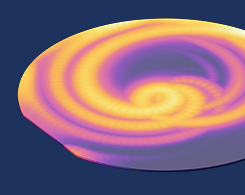
How to Use State Variables in COMSOL Multiphysics®
As of COMSOL Multiphysics® version 5.5, you can use state variables to track the state of your model; affect other fields, such as material properties; and even implement hysteresis.

Modeling Heat Transfer in Thin Layers via Layered Material Technology
We answer some questions you may have about the Layered Material functionality in the COMSOL® software: What does it do? How do you update existing models? How do simulations benefit from it?
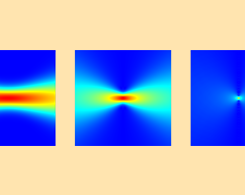
Evanescent Component of the Nonparaxial Gaussian Beam
The evanescent component of the nonparaxial Gaussian beam background field is available as a feature in the Wave Optics and RF modules as of COMSOL Multiphysics® version 5.5.
